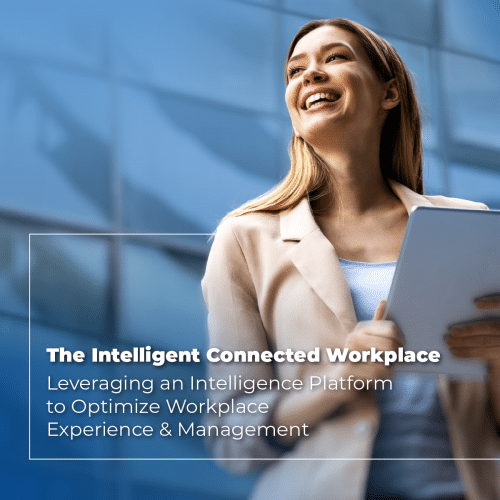Post-COVID, real estate teams around the world are confronting enormous uncertainties around workplace change, building occupancy, new usage patterns, and evolving employee expectations. Following the massive remote work experiment caused by the pandemic, most employees now want the option to work from home at least part of the time. And especially at the high end of the labor market, employees have never had more leverage than today.
Hybrid work as a long-term option
As a result, many companies are assessing the implications of a ‘hybrid workplace’ as a long-term option. They are increasingly shifting to flexible seating arrangements and are reconfiguring their workspaces to accommodate new ways of working. In doing so, they need insight into how much space is still needed and what types of space and amenities they should provide going forward. To make decisions with confidence, organizations can no longer rely on disparate, incomplete, and disconnected utilization data. They need more granular and connected data, advanced analytics, and powerful data visualization tools. And to successfully run and service a flexible workplace with a distributed workforce, businesses need real-time data, too.
Real-time data insights
Think of it this way: running an office becomes more like driving a car. You expect your car’s engine computer to monitor and control all essential functions in real-time. And even to adapt to changing conditions and your own driving patterns. You also want live information on speed, lights, fuel, etc. And you expect to get an alert as soon as anything is malfunctioning or when a risk emerges (low temperatures and risk of slippage, for example). This is precisely the type of live data that FM teams in a flexible workplace require as well so that they can act on information as it happens. Even more importantly, real-time data helps employees smoothly navigate the complexities of a hybrid workplace and have a productive workday.
Across the industry there is a recognition of the transformative power of increased connectivity and analytics from the IoT.
Opportunities and impact of IoT-related technologies
Even before the pandemic, the rise of coworking spaces, the explosion of the Internet of Things (IoT), and growing awareness of the potential of machine learning and artificial intelligence for transforming workflows were already driving speculation about the future of building and workplace change management. These advancements, along with the benefits they bring in terms of flexibility and efficiency, rest on a backbone of connected software tools. This software platform captures Smart Building data and transforms it into actionable information, often through automated processes.
Across the industry, there is a recognition of the transformative power of increased connectivity and analytics from the IoT to manage workplace change. To reflect the profound changes brought about by IoT-related technologies and the shift to hybrid workplace strategies, consulting firm Verdantix in May 2022 launched a new software category: Connected Portfolio Intelligence Platform or CPIP.
Connected Portfolio Intelligence Platform (CPIP): the next era of IWMS systems
As Verdantix states in its report Market Insight: The Transformation Of IWMS To Connected Portfolio Intelligence Platforms (CPIP): “Since the 2000s, firms have used integrated workplace management systems (IWMSs) as a central point of integration across assets, space, maintenance, energy, and workplace management processes. Today, IWMS solutions are evolving into a new era, shaped by analytics, the Internet of Things (IoT), and employee-facing functionality, to offer new value to customers.

Verdantix defines CPIP solutions as: “Cloud-connected platforms that help firms enhance the performance of buildings across portfolio management, operations, and employee experience. These platforms intelligently combine data from building systems, smart building devices, and IoT sensors with advanced analytics, workflow management engines, and mobile solutions.”
According to the consulting firm, key components of CPIPs are:
- A broad suite of modules
- Real-time data input from sensors, building equipment, and existing systems.
- Integrations across third-party and best-of-breed solutions (using application programming interfaces or APIs)
- Consistent user interfaces across modules and devices
- Advanced analytics across multiple modules
Leveraging an intelligence platform to stay on top of workplace change
The workplace can uniquely benefit from the ability of IoT sensors and devices to bring in near-real-time data. Coupled with powerful analytics, this enables us to gain better insights and create smarter workflows. Key workplace scenarios are in the areas of:
- Optimizing occupancy, utilization, and space efficiency
- Monitoring indoor air quality and improving health and vitality
- Providing real-time guidance to occupants and facilitating collaboration
- Enhancing thermal comfort and increased energy efficiency
- Improving the efficiency of facility service management
For a good understanding, a workplace can be an office building. But it can just as well be a hospital floor, an airport, a warehouse, or any other type of facility where work gets done or services delivered.
This blog post is an excerpt of the June 2022 white paper on Transformative Workplace Management










